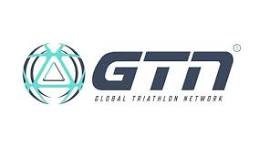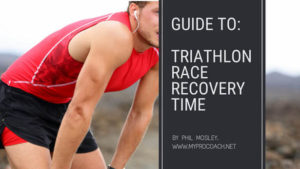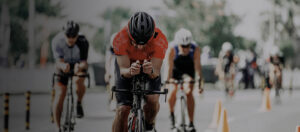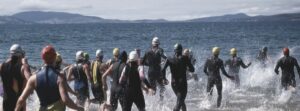Freestyle swim drills help you to break your stroke down into smaller parts, making it easier to learn. There are lots of different freestyle drills out there.
In this blog we’ll show you some of the best, using underwater video and descriptions, to help you learn.
Swim drills go in and out of fashion, but the ones I use for coaching and swimming were taught to me by Coach Lawrie Dormer, from Bournemouth Swim Club in the UK. He’s sadly no longer with us, but throughout his life, he helped thousands of people to swim faster.
His poolside communication could sometimes feel harsh, but it was certainly effective. If you did a drill badly, he’d make a big example of you in front of the other swimmers. It really made you concentrate.
And concentration is vital because if you’re not trying to do them properly, there’s no point. You can’t afford to disengage your brain during a skill-learning exercise. You need to do them slowly, and with focus. There are no prizes for coming first.
The hardest thing about learning a new drill is translating the image in your head, into a feeling in the water. You might know what your stroke should look like, but that doesn’t mean you can do it.
When you’re trying a new drill, it’s better to use fins or a pull buoy, and a swimmer’s snorkel. This helps you focus on your technique, without worrying about sinking. Once you’re eventually happy with your technique, you can ditch the swim toys and practice without. It might take several months to reach this stage though.
Mastering freestyle is never easy, but drills help by breaking your stroke into smaller parts. Learning each drill will make it easier for you to implement positive changes to your full stroke.
That doesn’t mean you can ignore the fitness side of your swim training though. Both technique and fitness are equally important. That’s why we include drills as part of the swim workouts in our training plans – along with harder efforts. Some of the fastest swimmers have imperfect strokes.
There are lots of drills out there, but in 20 years of training and coaching, I have never found one single “magic drill” that solves everything. It’s better to focus on learning a range of drills well.
If one drill feels particularly difficult, it may highlight a weakness in your stroke. For this reason, avoid the temptation to focus solely on the drills you find easiest.
We use six main freestyle technique drills:
Drill 1: Fists
What is it? Swim freestyle, but with your fists clenched.
Is this drill for me? This drill teaches you to use the soft underside of your forearms for propulsion. If you feel like your arms aren’t getting you anywhere, this could be the drill for you.
Technique: Swim freestyle, as normal, but with your fists clenched tightly. Making a fist means that you cannot use the fingers and palm of the hand as a paddle.
As you pull your arm through the water, focus on a high elbow position, so that the underside of your forearm catches the water like an oar. When you pull your arm through the water, accelerate it from slow to fast, right through to the finish. You may feel like you are going nowhere at first – but persevere.
Drill 2: Front Scull
What is it? Sculling your hands in a small figure of eight, with your arms outstretched.
Is this drill for me? This drill teaches you how to angle your hands and arms, in order to effectively grab hold of the water at the beginning of the stroke.
Technique: Place your two hands as far out in front of you as you can. Bend your wrists, point your fingers and palms downwards and use your hands for forward propulsion by driving them back and forth with a small side-to-side motion. Kick gently, for further propulsion.
This drill isolates the early part of your stroke – just after your hand pierces the water. It teaches you about the angle and shape you need your hands to be in, to balance and propel yourself. It really helps give you a “feel” of what works and what doesn’t. You are essentially trying to hold the water rather than having your hand slice through it.
Drill 3: Mid Scull
What is it? Sculling your hands and forearms in a figure of eight, with your elbows bent.
Is this drill for me? This drill encourages you to adopt a high elbow position, as you pull your arm through the water. This increases propulsion (distance per stroke).
Technique: Bend your elbows and scull your whole forearm and hands in a gentle figure-of-eight sculling motion. Your arms should be angled down and slightly forwards, with your hands and forearms pointing towards the bottom of the pool. Kick your legs for propulsion.
The mid scull drill isolates the catch and pull-through phase of front crawl. During this phase of the stroke, you’re grabbing hold of the water before accelerating it backwards. The emphasis is on a high elbow position, with fingers, palms, wrists and forearms pointing down.
Drill 4: Doggy Paddle
What is it? Swimming freestyle, but with your arms remaining underwater throughout.
Is this drill for me? This drill addresses various parts of your freestyle stroke including the catch, high elbow position and finish for the underwater part of the stroke.
Technique: Essentially, this drill is just like doing your normal freestyle – but your arms remain underwater for the entire stroke. Kick enough to maintain your balance and extend your arm into the catch position.
Pull through with a high elbow, accelerating to the finish, but do not recover like you normally would. Instead bring your arm back to the front of the stroke under the water, while the other arm engages in the catch, pull and finish.
Drill 5: Single Arm
What is it? Swim normal freestyle, but with one arm pressed tightly to the side of your body.
Is this drill for me? This challenging drill encourages you to concentrate on your rhythm, rotation and propulsion.
Technique: Swim normal freestyle, but with one arm pressed tightly to the side of your body. Breathe away from the stroking arm. And breathe on every single one-arm stroke – even if you don’t feel you need to. This helps drive your body rotation.
The key to the drill is to make sure that you rotate your body fully to the dead side. You really have to emphasize dipping the dead shoulder into the water as there’s no arm stroke on that side to help you. As you swim, think: “stroke and dip… stroke and dip…”. Once you get the hang of “stroke and dip” you can then focus more on your propulsion.












